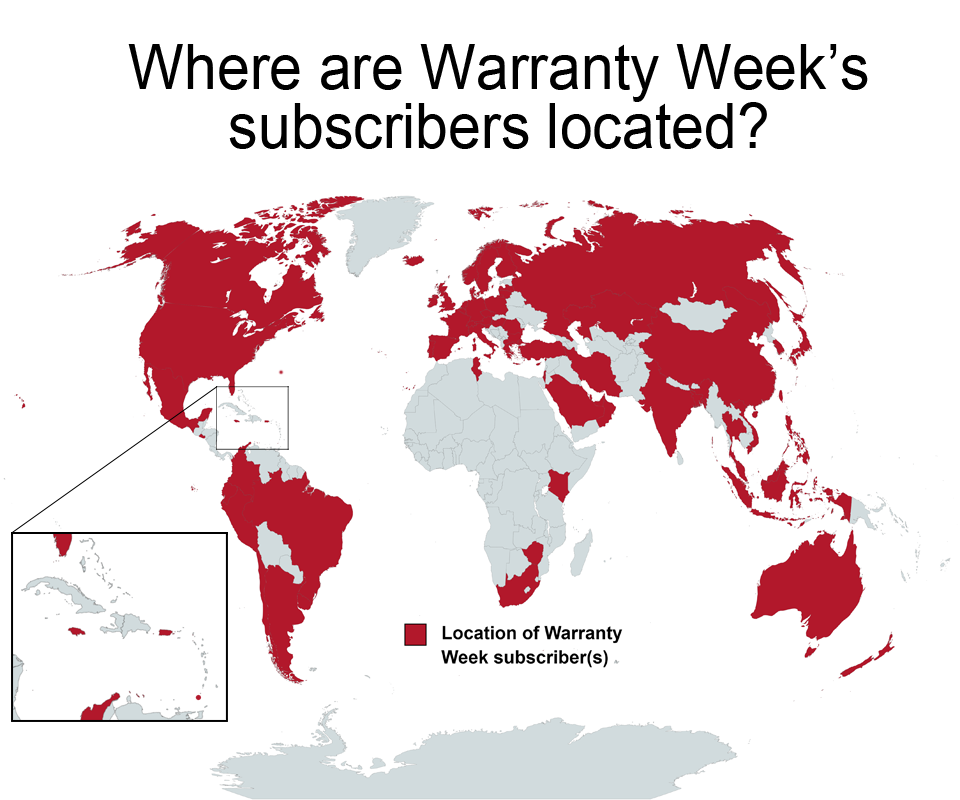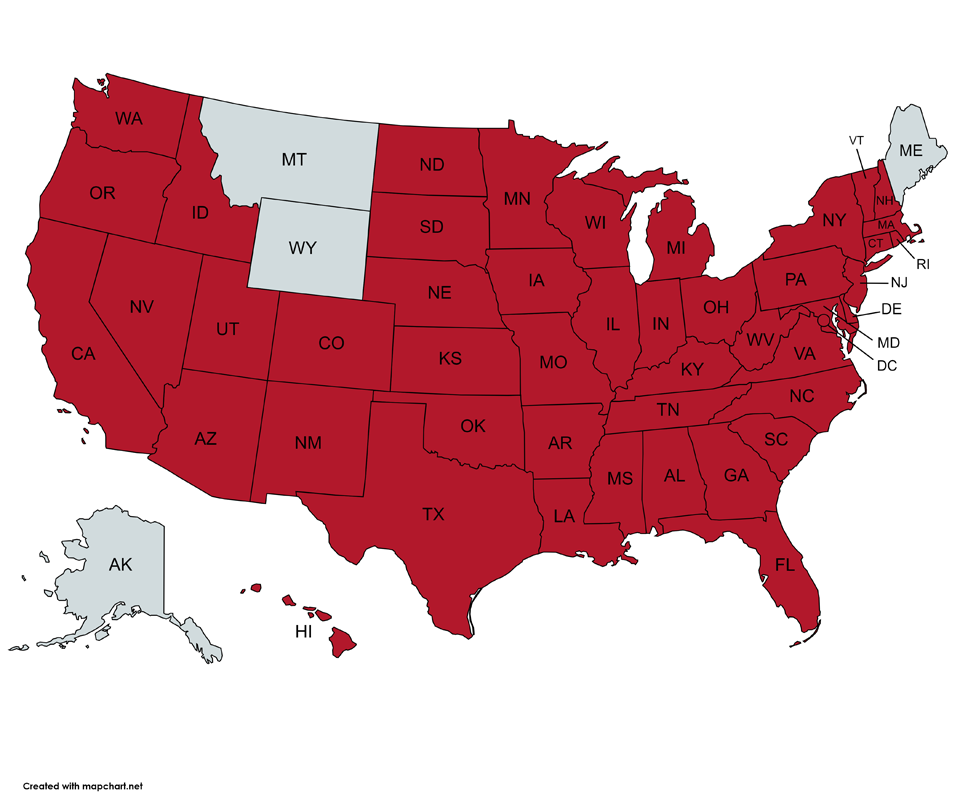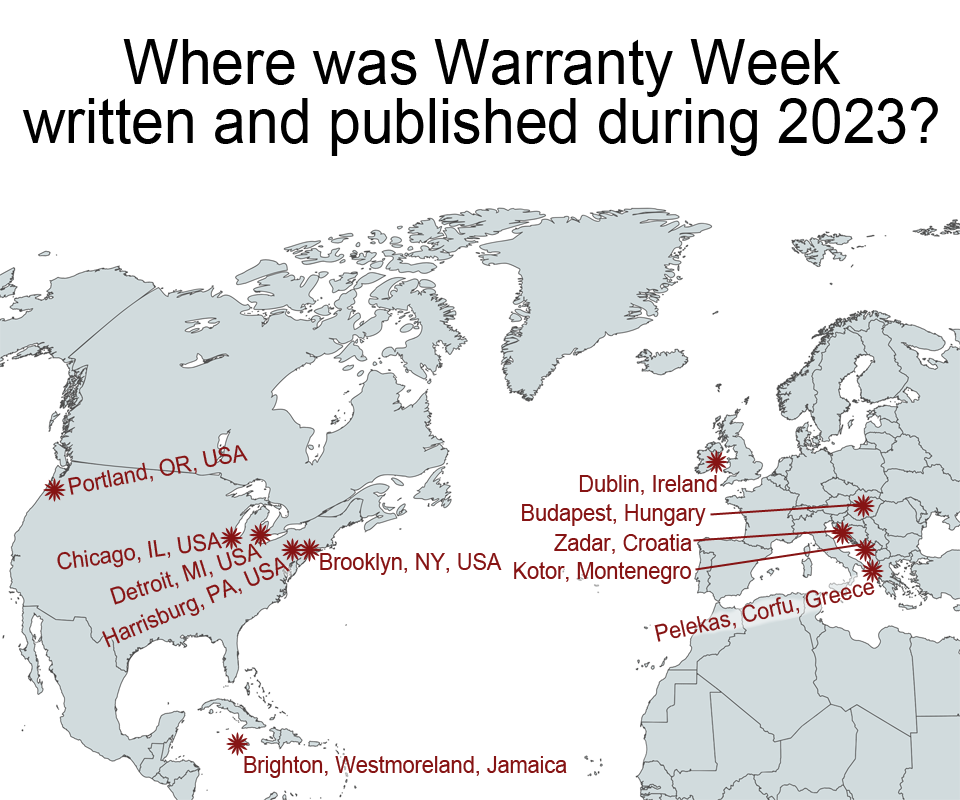Warranty Week Retrospective:
The end of 2023 marks Warranty Week's 21st anniversary, and the first full year with our new editor at our helm. Many of our subscribers have been loyal for years, even decades, with some still here from the very beginning. This week, we're celebrating Warranty Week, the New Year, and all of our wonderful readers.
Happy New Year to all! After over 21 years of (nearly) weekly newsletters about warranties, we're taking a moment to look back on these past two decades. We're celebrating our founding editor, Eric Arnum, who was promoted to the role of publisher at the beginning of 2023. We're celebrating his three successful industry conference presentations this year, after the pandemic pressed pause on in-person gatherings for a while. And we're celebrating you, our readers, many of whom have been with us for decades, still diligently opening our emails every Friday morning.
Our Origin Story
Eric Arnum launched Warranty Week in late November, 2002. Our first-ever newsletter, published on December 18, 2002, was simply entitled, "Why Warranties Matter."
That fateful first article began,
"Warranties are everywhere, but few people give them much thought. New homes have warranties. Automobiles have warranties. Home appliances, consumer electronics, computer software, toys -- virtually anything of value comes with a warranty. Even the jumbo jets flown by the major airlines are sold with warranties.
Warranties, like insurance, offer the buyer some protection. Some companies are mixing the two, selling what amounts to health insurance policies for automobiles, guaranteeing their repair after breakdowns as well as accidents. In fact, one of the biggest points of differentiation between extended warranty vendors today is the health of the insurance companies that ultimately back their policies.
At its root, a warranty means a manufacturer believes their product won't break prematurely, but just in case it does, here's how we'll repair or replace it. An extended warranty means we know things wear out over longer periods, but we think our products will beat the odds. A warranty is the backup to a statement of quality: it won't break but if it does, you're covered."
Closing out that article, Arnum wrote: "Think of us as the in-flight magazine for the warranty industry. We know there are other airlines, but there's nothing in their seat-backs except some air sickness bags. So push your seat back, enjoy your complimentary beverage, and be sure to ring the flight attendant's bell if there's anything you need."
Arnum has taken his role as pilot of Warranty Week very seriously over the years. In addition to offering weekly newsletters, he took over the role of compiling all of the latest headlines related to the warranty world, all located on one convenient hub. In fact, our Industry Headlines archive goes back all the way to September, 2000, over two years prior to this site's inception.
Eric Arnum has been diligently compiling all of the pertinent warranty industry headlines since, including the very headlines gracing the sidebar of this week's edition. This is just one of the many ways that he has made an impact on the warranty industry, and established himself as the world's foremost warranty journalist.
Arnum was no stranger to online newsletter composition and distribution when he founded Warranty Week. Prior to finding his niche in the warranty space, Arnum reported on email and online messaging for a number of years, for a variety of publications that often changed hands and names. He also contributed articles to several music publications, and enjoyed many free concert tickets in the 90's in exchange for taking a few photos and writing up a review of the show.
Warranty Week has certainly evolved over the years, as have consumer behavior, technology, economic conditions, and the laws regulating our industry. The second Warranty Week newsletter, published on December 23, 2002, and entitled "Online Retailers Have Different Approaches to Warranty Law Compliance," explored product warranty information provided by 15 online retailers. Arnum found a listing on each site for a 13-inch color TV, recorded the relevant warranty information provided, and evaluated each retailer's adherence to the regulations of the Magnuson-Moss Warranty Act. At the time, online retailing was a very new frontier, and many of the retailers failed to provide all of the necessary warranty information in a visible and accessible manner on their websites. The FTC was lagging behind and struggling to regulate the digital realm.
Here's a great excerpt from that article:
"This is a retailer's worst online nightmare. Their site gives the bare minimum amount of warranty information permitted by federal law, and then their customers report major problems with reliability. Then some of those customers report their unhappiness with the (unstated) terms of the warranty. Narratives detailing their unhappiness are posted right under the product description. It's as if your disgruntled customers are loitering around the sales desk in your place of business, offering their tales of woe to your potential customers. Bottom line: when 60 percent of the reviewers report breakdowns, and one out of five notes that he found out the hard way that the warranty doesn't cover labor, people like us are talked out of making the purchase."
Warranty Week attended its first trade show in January 2003, and a Arnum posted the following newsletter about his experience: "What Recession?: Consumer Electronics Thrives During Downturns, Las Vegas CES Show Was Packed."
And in May 2003, Warranty Week reached an even more fateful milestone: Arnum introduced the accrual rate for the first time. Though the measurement is called "Basic Warranty Costs (% of sales)" in that first usage, the figures were calculated by dividing Dell's total warranty accruals by its total sales revenue, to calculate warranty costs (accruals) as a percentage of sales. This is the same formula we use to calculate our warranty expense rates today.
Arnum took that idea and ran with it, following that article up with a series of articles containing tables detailing product revenue, total warranty claims, and claims as a percentage of sales (the claims rate) for many companies and industries. He began this series with the newsletter "Windfall for Warranty Managers," which detailed the top 25 U.S.-based product warranty providers. The warranty expense rates—namely, the claims and accrual rates—are, of course, now a hallmark of Warranty Week and its reporting on the product warranty expenses of a wide variety of global industries.
Our Global Readership
Arnum has nurtured and grown Warranty Week over the past two decades, bringing it to where it is today. Our email list is larger than ever, though many of our first subscribers have happily retired and deactivated their corporate email addresses in subsequent years.
While the only information we require for our free subscription is name and e-mail address, some of our subscribers do kindly provide us with additional information about themselves. We used that data to create the following map, Figure 1, which depicts all of the countries and overseas territories in which Warranty Week subscribers are located.
It's wonderful and amazing to think that this newsletter, like hundreds before it, is finding its way across the globe in the span of just minutes, and reaching readers in just about every time zone.
Figure 1
Where Are Warranty Week's Subscribers Located?
(By Country or Overseas Territory)
Map by Drew Arnum, made using MapChart
Projection: Winkel Tripel

Here is the full list of countries and overseas territories in which our subscribers live and work:
- Argentina
- Australia
- Austria
- Bahrain
- Bangladesh
- Belgium
- Bermuda
- Brazil
- Bulgaria
- Canada
- Chile
- China
- Colombia
- Curaçao
- Cyprus
- Czechia
- Denmark
- Ecuador
- El Salvador
- Finland
- France
- Germany
- Greece
- Grenada
- Hong Kong
We have 74 countries and territories represented in our subscriber list — that we know of. We assume that we have subscribers in areas not shaded in on this map, simply because not everyone fills out the subscriber information form. If your country is not represented in Figure 1, please feel free to send us a message, and we'll add your area to the map.
However, roughly 75% of our reader base is located in the United States (again, we don't know exactly). So we decided to map out which states have at least one Warranty Week subscriber living in them, shown in Figure 2.
We made this map zoomed in on the United States because it's the location of the majority of our readers, as well as the country in which Warranty Week is based. But we just as well could have made a map of the states and union territories of India, states of Brazil, provinces of Canada, or the counties of the UK, all of which have wide regional representation among our subscriber base.
Figure 2
Where Are Warranty Week's Subscribers Located
Within the United States?
(By U.S. State)
Map by Drew Arnum, made using MapChart

We can see in Figure 2 that Warranty Week subscribers are located in 46 U.S. states, excluding Alaska, Maine, Montana, and Wyoming. (If you're reading this in your email and live or work in any of those four, please reach out and prove us wrong. And if you have friends in the warranty industry in a location not shaded in Figures 1 or 2, feel free to forward them this email and encourage them to click subscribe ☺)
We are deeply grateful to all of our subscribers, and look forward to many years to come, as we deepen our readership bases and expand to new areas across our digital world.
Which brings us to our third map of the Retrospective. As we alluded to earlier, we've had a new editor, Drew Arnum, at our helm since January 2023. I am very proud to be taking over this business that my father built, and learn and grow under his mentorship.
Warranty Week continues to be based in New York City, though Drew lives in Brooklyn, while Eric lives in Queens. And while Eric works primarily from a desktop, Drew works on a laptop, which has afforded her the privilege to write, publish, and distribute Warranty Week newsletters from a variety of locations in North America and Europe during her first year as editor. Figure 3 depicts all of the locations in which Warranty Week was composed during 2023.
Figure 3
Where Was Warranty Week Written
and Published During 2023?
(By City or Municipality)
Map by Drew Arnum, made using MapChart
Projection: Winkel Tripel

Warranty in Popular Culture
And now for something completely different: We're going to wrap up our Warranty Week Retrospective by highlighting a few fun references to warranties we came across in popular culture this year.
Many of us are familiar with the Your Car's Extended Warranty meme phenomenon, which grew out of the very real problem facing our industry of robocalls and spam calls that begin, "We've been trying to reach you about your car's extended warranty."
Just in case you're not familiar, here's an example of one of these memes:

But this thing has grown way beyond what we may have imagined, and far beyond silly captions on photos on the internet. Earlier this year, we came across a pair of short shorts that say "We've been trying to reach you about your car's extended warranty" across the back. We can't imagine that many warranty professionals would buy or wear these, but they seem to be popular:

The word "warranty" seems to be part of young people's vocabularies way more than every before. Mentions of warranties, and even rather detailed technical information about warranties, are coming up in huge video games, because of the popularity of these memes.
Take a look at this YouTube clip, from the video game Starfield, which was released in September 2023, and is one of the largest open-world video games ever released. All you need to know is that it takes place in space, in a fictionalized, futuristic version of the Milky Way galaxy.
The interaction, oft-labeled an "Easter egg" by fans, begins when you encounter an "Unknown Ship," which says to you, "Thanks for responding to my hail! We've been trying to contact you about your ship's extended warranty. Your warranty coverage has expired or is about to expire. Due to the uncertainty of the political situation in the Settled Systems, we think now is a great time to renew your ship's warranty protection plan, or purchase a new one if you lack coverage."
As shown the video linked above, you have the option to ask for more information, which leads you down a several-minutes-long, rather boring onslaught of technical information and fine print. The more popular option, it seems, it to reply, "I've had enough of this," and attack the ship. Perhaps this is an opportunity for the video gamers of the world to take out their frustration for the years of unsolicited robocalls?
Funny enough, when you choose to attack the extended warranty ship, it says to you, "Damaging property of the owning group or its subsidiaries will result in a void of the warranty and an inability to purchase plans in the future. This may impact you ability to live a fruitful and carefree life." Hopefully, space laser attacks are covered by the spaceship service contract.
And just because we value thoroughness, we looked into whether there are any benefits of actually purchasing the spaceship extended warranty, which is an option in the game as well. According to this article in Game Rant by Mohsen Baqery, "Unfortunately, the extended warranty encounter in Starfield is nothing more than a space scam. Players are advised against purchasing any assurance plans, as they do not provide benefits to their ship. Once players transfer the money, the Unknown UC ship will disappear and never be seen again."
It's funny to see, but it's also a stark reminder of the reputational concerns and negative public opinion facing the warranty industry right now as a result of these calls.
And finally, we'll leave you off with one more mention of spaceship warranties, though this one is seemingly referring to product warranties. In the video game The Outer Worlds, there comes a moment where the player must make a risky maneuver in their spaceship. When making the choice to do so, the player is prompted, "Are you sure? That is extremely dangerous. Skipping the Hope [spaceship] will void the warranty on the skip drive... And also potentially kill an entire planet."
So maybe sometimes warranties can be matters of life or death. Certainly, many video game designers believe that warranties are so integral to vehicle manufacturing that they'll still exist in any manner of futuristic world. Maybe one day, Warranty Week will cover passenger spaceship warranties along with airplane, car, bus, truck, recreational vehicle, and heavy equipment warranties.
Until then, we hope you'll continue to come to us for all of the latest warranty news, headlines, and data. Thank you for a wonderful 21 years. Happy New Year! We'll see you in 2024.







